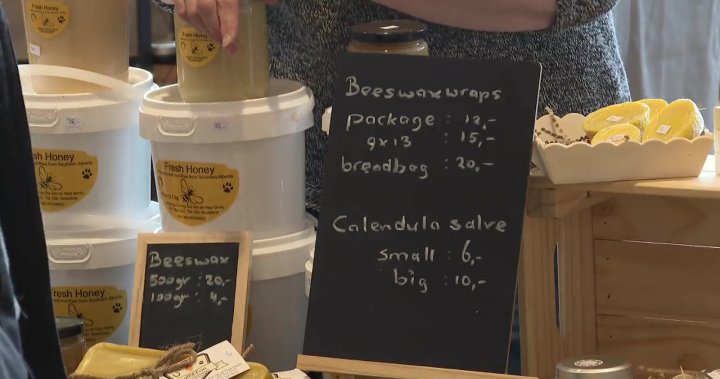A Shift Towards Local: The Rise of Community-Driven Markets
In recent months, the looming threat of a trade war between Canada and the United States has sparked a renewed sense of urgency among Canadians to support local businesses. As tensions rise, many are turning their attention to purchasing goods and services within their communities, recognizing the importance of keeping money close to home. This shift in consumer behavior has been particularly evident in smaller cities like Lethbridge, Alberta, where events like the Valentine’s Market, hosted by the Domesticated Divas, have become hubs for local commerce and connection. Events like these not only provide a platform for small businesses to thrive but also foster a sense of unity and mutual support among community members.
Celebrating Local at the Valentine’s Market
The Valentine’s Market in Lethbridge has emerged as a prime example of how local initiatives can bring people together while promoting homegrown products. Organized by the Domesticated Divas, this event has become a popular destination for shoppers looking to buy everything from handmade crafts to artisanal foods. Gita Kaura, one of the event organizers, highlighted the growing interest in local products, stating, “A lot of our shoppers… are loving that they can support people within their community.” This sentiment is reflective of a broader movement where Canadians are prioritizing local businesses over imported goods. By creating spaces like the Valentine’s Market, organizers are helping to build stronger, more resilient communities where money stays within the local economy.
Vendors’ Perspective: The Challenges and Rewards of Local Production
For vendors at the Valentine’s Market, the increased interest in local products has been both a blessing and a challenge. Jessie Goodfellow, owner of Jessie’s Jams, shared her experience, noting that “People are looking for homemade, Canadian-made, Canadian-produced everything.” This demand has been a boon for her business, but it has also brought its own set of difficulties. Rising costs for materials and supplies have made it harder for small businesses like hers to maintain steady prices. For instance, Goodfellow mentioned that the cost of a case of jars has increased from under $12 to nearly $16 in just one year. Despite these challenges, many vendors remain optimistic, seeing the growing support for local goods as a sign of a more sustainable future for small businesses.
The Cost of Supporting Local: Balancing Affordability and Quality
As Canadians increasingly turn to local products, the conversation around cost and affordability has become more prominent. While some consumers may worry about higher prices, many are willing to pay a little extra to support Canadian businesses. Ralph Corey, a shopper at the Valentine’s Market, echoed this sentiment, saying, “I think that ship has already started, I don’t think you’re ever going to stop it now.” For many, the benefits of buying local—such as better quality, reduced reliance on imports, and the satisfaction of supporting neighbors—far outweigh the potential added costs. However, small businesses are also working hard to balance affordability with the rising expenses of production, ensuring that their products remain accessible to a wide range of customers.
Consumer Support: A Growing Movement Towards ‘Made in Canada’
The shift towards buying local is not just a passing trend; it’s a movement that is gaining momentum across Canada. Friends, family, and even social networks are playing a role in spreading the message of supporting local businesses. Ralph Corey, for instance, mentioned that all his friends and family are now talking about the importance of purchasing Canadian-made goods. This grassroots movement is being fueled by a growing awareness of the economic and social benefits of keeping money within the community. As more people join in, the impact on local economies is likely to grow, creating a ripple effect that could have far-reaching consequences for Canadian businesses and consumers alike.
The Future of Local: Sustaining Momentum in a Changing Economy
As Canada navigates the uncertainty of potential trade tensions with the U.S., the emphasis on buying local is likely to remain a key focus for many consumers. Events like the Valentine’s Market in Lethbridge serve as powerful reminders of the importance of community-driven initiatives and the role they play in fostering economic resilience. While challenges such as rising costs and supply chain issues may persist, the growing support for local businesses offers a hopeful glimpse into the future. By continuing to prioritize locally made products and supporting small vendors, Canadians can help create a more sustainable and self-reliant economy—one that is better equipped to weather the storms of global uncertainty. In doing so, they are not just shopping; they are investing in the future of their communities.












